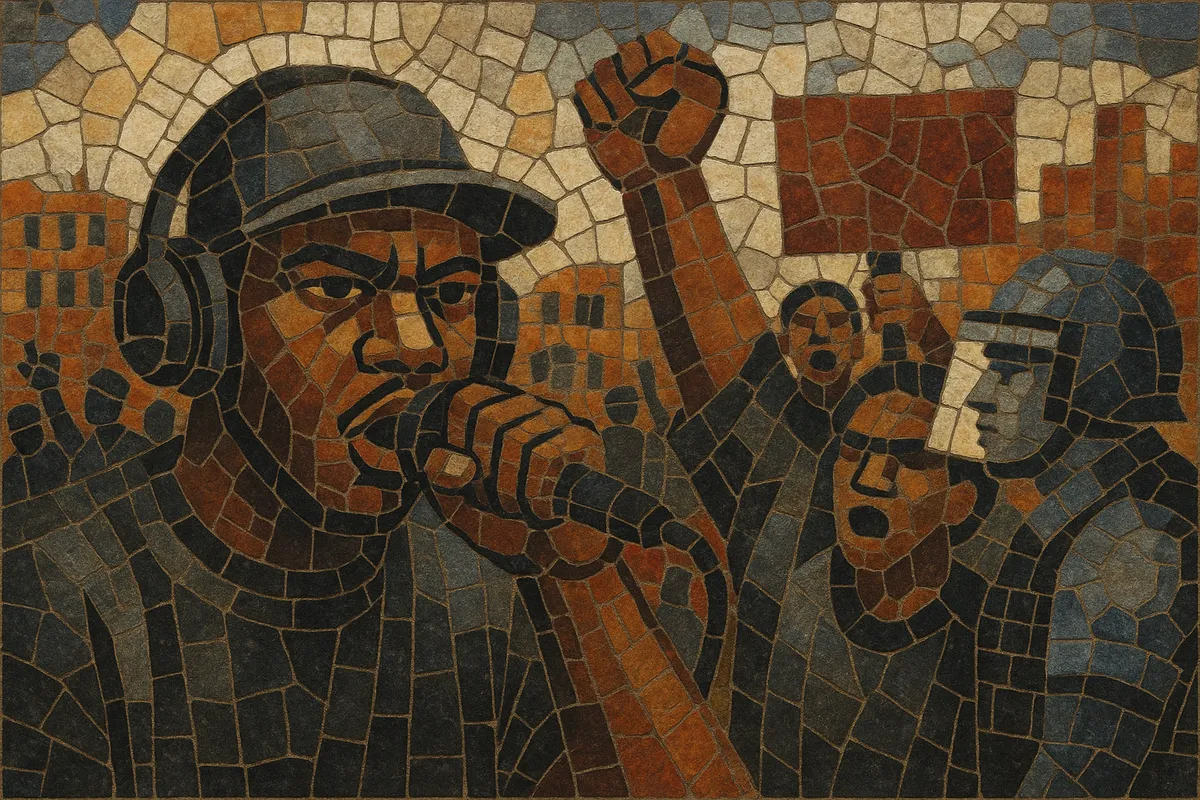Political hip hop is a branch of hip hop that foregrounds social critique, civic engagement, and political education. Its lyrics address systemic racism, policing and carceral systems, poverty and class, imperialism and war, voter suppression, media bias, and community self-determination. Artists often use rhetorical devices, historical references, and speech samples to make arguments as much as to entertain.
Musically, the style draws on boom‑bap rhythms, funk and soul sampling, abrasive collage production (famously by The Bomb Squad), and, at times, jazz rap’s reflective textures. Clarity of delivery and message density are prioritized, with hooks designed to mobilize, provoke, or unify listeners. The genre has developed global branches, adapting local issues and languages while maintaining the core emphasis on political content.
Political hip hop emerged as hip hop matured from party music into social reportage. Grandmaster Flash and the Furious Five’s “The Message” (1982) proved that detailed depictions of urban inequality could reach mainstream audiences. Spoken‑word pioneers like Gil Scott‑Heron and The Last Poets supplied a template for polemical delivery and political urgency that emcees adapted to rap’s rhythmic cadences.
The late 1980s crystallized the genre: Public Enemy’s It Takes a Nation of Millions to Hold Us Back (1988) and Fear of a Black Planet (1990) set a high watermark with dense sonic collages and pointed critiques of racism and media. KRS‑One—first with Boogie Down Productions and later solo—framed rap as "edutainment," while groups like X‑Clan and Paris advanced Afrocentric and explicitly radical perspectives. These releases coincided with the Reagan/Bush era, mass incarceration, and media consolidation, sharpening the music’s oppositional stance.
As commercial rap diversified, politically engaged artists often thrived in the underground: The Coup fused funk with Marxist satire; Dead Prez’s Let’s Get Free (2000) mixed health, self‑defense, and anti‑imperialism; and Immortal Technique delivered hardline geopolitics and anti‑corporate narratives. The era also saw overlaps with jazz rap and alternative hip hop, where socially conscious themes were common.
Outside the U.S., scenes in France (e.g., Assassin, IAM), the U.K. (Lowkey, Akala), Latin America (Ana Tijoux), and the Middle East (DAM, Shadia Mansour) localized political hip hop, addressing immigration, austerity, dictatorship, and occupation. Digital distribution and DIY media amplified organizers’ and artists’ ability to circulate protest music beyond traditional gatekeepers.
Movements such as Black Lives Matter, Arab Spring aftershocks, and global protests against inequality renewed the genre’s urgency. Kendrick Lamar brought political narratives back to the center of mainstream discourse, while Run the Jewels paired confrontational beats with systemic critique. Newer artists and collectives continue to blend documentary sampling, investigative lyricism, and community activism, maintaining political hip hop as a living tool for cultural resistance.
Aim for 85–100 BPM boom‑bap grooves or halftime trap feels that leave space for dense verses. Use punchy, dry kicks and crisp snares; swing the hi‑hats slightly to keep the flow human and emphatic.
Favor minor modes and tense intervals to underscore urgency. Loop gritty soul/funk/jazz samples, or build chord beds with electric piano and horns. Layer drones, sirens, or dissonant stabs for moments of escalation.
Write with a journalist’s eye and an organizer’s goal. Cite events, policies, and statistics; define terms in‑verse; and balance critique with calls to action. Use rhetorical devices (anaphora, antithesis, allusion) and vary cadences to highlight key lines. Hooks should be memorable chants that can function as protest slogans.
Incorporate archival material—news clips, speeches, protest chants—responsibly and legally, using them as evidence or counterpoint. Employ DJ cuts for emphasis between verses. Contrast sparse verses with dense, Bomb Squad‑style sections to sonically represent pressure and resistance.
Open with a thesis (short intro speech/sample), develop arguments across 2–3 verses, and reserve a bridge for reflection or a featured voice (poet, activist, elder). Close with a distilled call to action or resource links in accompanying materials.
Prioritize clarity of diction and mix vocals forward so the message is unmistakable. Engage communities: fact‑check references, credit sources, and consider impact—political hip hop is art and advocacy.


